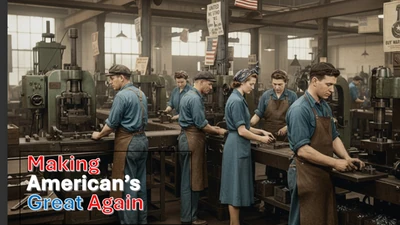In the second quarter of 2025, the coffee industry faces a complex landscape shaped by supply chain challenges, rising costs, and shifting consumer behaviors. From a conservative perspective, which emphasizes fiscal prudence, market stability, and skepticism of rapid transformation, the coffee sector is poised for cautious navigation amid significant headwinds. This article explores the key factors influencing the industry’s outlook, drawing on current trends and projections to provide a grounded assessment.
Supply Constraints and Price Pressures
The coffee industry is grappling with unprecedented price volatility, driven primarily by supply-side disruptions. Arabica coffee prices, a benchmark for specialty markets, surged by over 80% in 2024, reaching levels not seen in over a decade, and robusta prices have followed suit due to tight global supplies. Brazil, the world’s largest coffee producer, experienced its worst drought in 70 years in 2024, followed by erratic rainfall that damaged crops during the critical flowering stage. Forecasts for Brazil’s 2025/26 coffee output suggest a decline of 3% to 6.4% compared to the previous cycle, further tightening supply. Vietnam, a key robusta producer, also faces production challenges due to prolonged dry spells and heavy rains, with exports projected to remain constrained.
From a conservative standpoint, these supply constraints signal sustained high prices through Q2 2025, posing risks to both producers and consumers. Major brands like JDE Peet’s and Starbucks have already announced price hikes of up to 30% in early 2025 to offset rising raw material costs. For smallholder farmers, who account for 80% of global coffee production, high prices are offset by rising input costs, labor shortages, and delayed payments, limiting their ability to capitalize on market conditions. Conservative analysts view this as a call for supply chain resilience, advocating for diversified sourcing and strategic stockpiling to mitigate volatility, rather than speculative investments in new production capacity.
Economic and Policy Headwinds
The broader economic environment adds complexity to the coffee industry’s outlook. In the U.S., the world’s largest coffee market, inflation remains sticky at around 3%, above the Federal Reserve’s 2% target, with tariff hikes under the Trump administration’s “Liberation Day” policy expected to exacerbate goods inflation. These tariffs, designed to match duties imposed on U.S. exports, could increase costs for imported coffee and equipment, squeezing margins for roasters and retailers. The Atlanta Fed’s GDPNow model projects a Q1 2025 contraction of 0.5% to 2.8%, signaling potential consumer spending slowdowns that may dampen demand for premium coffee products.
Conservatives, wary of overreliance on global trade, emphasize domestic resilience and localized supply chains. While the U.S. coffee market is projected to generate $11.93 billion in at-home revenue in 2025, growing at a modest 2.96% annually, economic uncertainty may shift consumer preferences toward cheaper blends and instant coffee over specialty offerings. This pragmatic shift aligns with conservative values of frugality and self-reliance, encouraging businesses to focus on cost-efficient sourcing and value-driven products rather than chasing premiumization trends.
Consumer Trends and Industry Adaptation
Millennials and Gen Z, key drivers of coffee consumption, continue to prioritize convenience and affordability, fueling demand for ready-to-drink (RTD) coffee and app-powered ordering. However, a conservative perspective questions the sustainability of these trends, particularly as “tip fatigue” and rising prices push younger consumers toward home brewing. Data from the National Coffee Association indicates that 66% of Americans consume coffee daily, but older generations are more likely to brew at home, a trend that may gain traction across demographics if economic pressures persist.
The specialty coffee sector, once defined by passion-driven craftsmanship, is undergoing a pragmatic transformation. Roasters are shifting from high-end microlots to competitively priced blends, reflecting a focus on profitability over idealism. Conservative analysts applaud this move toward fiscal discipline, viewing it as a necessary correction to an oversaturated market. However, they caution against overcorrecting, as brand identity remains critical for customer loyalty. The rise of e-commerce, with U.S. retail e-commerce sales reaching $282.3 billion in Q2 2024, offers opportunities for direct-to-consumer models, but conservatives urge businesses to balance digital investments with traditional retail to avoid overexposure to tech-driven volatility.
Sustainability and Regulatory Challenges
Sustainability remains a buzzword in the coffee industry, with demand for organic, fair trade, and shade-grown coffee on the rise. Yet, from a conservative perspective, the push for sustainable practices must be weighed against economic realities. Climate change, a significant driver of supply disruptions, is expected to increase production costs by up to 20% by 2025, challenging producers to maintain quality without passing excessive costs to consumers. Regulatory pressures, such as the EU’s delayed deforestation laws, add further complexity, particularly for exporters in Vietnam and Indonesia.
Conservatives advocate for practical, market-driven solutions over regulatory mandates. Partnerships with local growers, investments in climate-resilient crops, and transparent sourcing can address consumer demand for sustainability without burdensome compliance costs. The focus should be on incremental improvements—such as water-saving irrigation or organic farming—rather than sweeping, costly overhauls.
Strategic Recommendations
For coffee businesses navigating Q2 2025, a conservative approach emphasizes resilience, cost control, and adaptability:
- Diversify Sourcing: Reduce reliance on volatile regions like Brazil and Vietnam by exploring emerging markets in Africa and Asia, where production is growing.
- Prioritize Value: Shift toward affordable blends and instant coffee to capture budget-conscious consumers, while maintaining a core specialty offering for loyal customers.
- Strengthen Local Supply Chains: Invest in regional roasters and distributors to mitigate tariff-related costs and supply chain disruptions.
- Balance Innovation and Tradition: Leverage e-commerce for growth but maintain physical retail presence to preserve brand trust and community engagement.
- Focus on Practical Sustainability: Adopt cost-effective, climate-resilient practices to meet consumer expectations without overextending resources.
The coffee industry in Q2 2025 will face significant challenges, from supply shortages and rising prices to economic uncertainty and regulatory pressures. A conservative perspective underscores the importance of fiscal discipline, localized resilience, and pragmatic adaptation to navigate these headwinds. While the global coffee market is projected to grow to $102.98 billion by 2025, success will hinge on businesses’ ability to balance quality with affordability, innovate without overreaching, and maintain customer trust in an increasingly competitive landscape. By embracing these principles, the industry can weather the storm and emerge stronger, ensuring that the daily cup of coffee remains a staple for millions worldwide.










